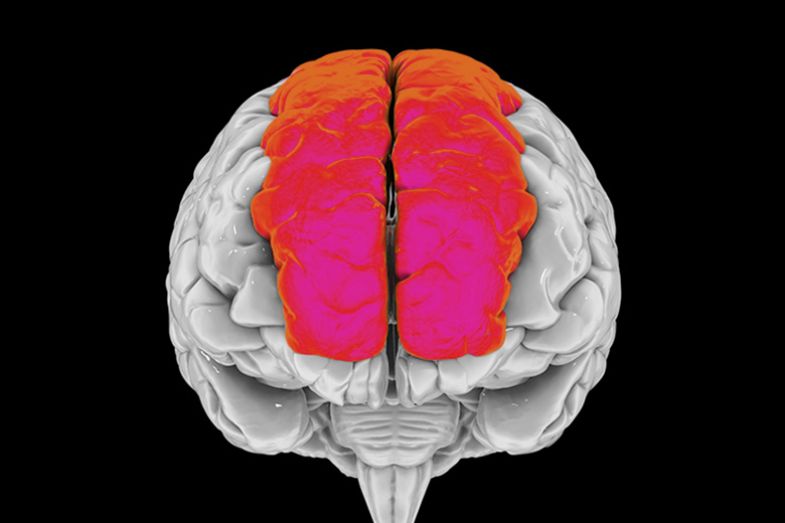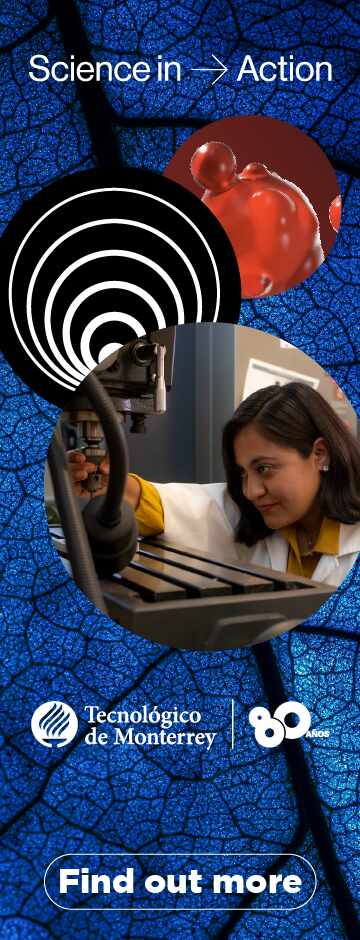https://tecscience.tec.mx/en/human-social/gamification-and-laughter-improve-student-performance/
Teaching can be enriched by using strategies such as incorporating a sense of humor in classes or using games to enhance learning.

This illustration shows the human brain with a highlighted superior frontal gyrus, also known as the marginal gyrus. It is located in the frontal lobe and is associated with self-awareness and laughter. (Photo: Getty Images)
Inés Gutiérrez Jaber
Teaching is a constant challenge for those who dedicate their lives, or part of their lives, to education, especially those involved in teaching difficult subjects like physics, mathematics, or chemistry.
This is why educational innovations are constantly being sought, which became evident to researcher Rodrigo González Barrios from the National Oncology Institute when he started teaching epigenetics to biology undergraduates in the Faculty of Sciences at the National Autonomous University of Mexico (UNAM).
Epigenetics is the study of the mechanisms that regulate gene expression in living things but do not make alterations to the DNA sequence.
In the researcher’s words: “If you were baking a cake, the genome would be the ingredients, utensils, and appliances you needed to make it and the epigenome would be the recipe.”
It is a complicated discipline that is sometimes hard to understand, which explains why it is usually kept for postgraduate studies. However, in collaboration with his colleague Ernesto Soto Reyes from the Faculty of Natural Sciences at the Metropolitan Autonomous University (UAM), he decided to put it on the bachelor’s degree syllabus.
“It was for personal reasons,” he explained to TecScience. “I would have liked to study a subject like that when I was at university.”
At the outset, the subject followed the traditional format: lectures with information-laden presentations, homework, and written exams. By the end of the first course, they realized that the lessons were too dense.
Having discussed the matter, they decided on a philosophy that held the secret to making their students real learners. “We saw that one way to help them understand was to lower the tone and make the lesson enjoyable,” says González Barrios.
Over time, this evolved into a hybrid between scientific rigor and fun with sessions comprising science-based jokes, creative activities, and didactic tests using games or teamwork.
Using humor in teaching
The formula was a success: their students enjoyed the class, often burst out laughing, and looked forward to coming back. Evaluations revealed no reduction in intellectual gain. On the contrary, they got good grades and seemed to have mastered the most difficult concepts.
“Not only did it help them understand, but it also began to attract many students from other places, even from other faculties and universities,” says González Barrios.
Without knowing it, the researchers confirmed a phenomenon that was already the subject of psychological research: humor and laughter improve students’ performance by attracting and maintaining their attention, enhancing their memory, reducing their anxiety, encouraging their participation, and increasing their motivation.
Behind this positive effect lie physiological changes in the body brought on by laughter, such as reduced levels of stress-related hormones like cortisol and epinephrine, increased brain reward system activation, and lower blood pressure.
Although González Barrios and Soto Reyes didn’t base their decision on these studies, they had noted a trend in the science world to reduce the seriousness of conferences by using analogies, examples from everyday life, or jokes when presenting the most recent discoveries.
González Barrios is still in charge of the class, which he teaches with the assistance of a colleague. Sometimes these colleagues are ex-students of his who, having taken his class, decided to devote themselves to epigenetic research.
Gamification: learning by playing
The idea of using humor to teach is aligned with another technique used in classrooms to facilitate learning known as gamification.
This consists of using game features and dynamics in non-recreational activities like education. Its goal is to improve students’ performance by enhancing their attention, improving a specific skill, or rewarding good deeds.
This technique can be put into practice anywhere from elementary school to postgraduate classes and is increasingly popular among teachers. For Elvira Rincón Flores, professor and researcher at the Institute for the Future of Education (IFE), gamification marks the end of her long journey to find innovative ways of teaching.
“I don’t think we stop wanting to play when we become adults,” she says in an interview with TecScience.
She now uses gamification strategies in her math classes to help her students learn better. Her design consists of awarding badges to students in recognition of their efforts.
These badges are inspired by superheroes like The Flash, Iron Man, Captain America, or The Fantastic Four and are given as a reward for different achievements, such as being a team player or being able to solve complex mathematical problems.
Thanks to this strategy, her students’ performance during lessons has improved and they show a more positive attitude towards mathematics.
The science of gamification
In addition to teaching, she spends her time doing scientific research on gamification. In collaboration with the University of Lima, Elvira Rincón and her team developed a platform called Gamit!, which uses a reward system to stimulate university students’ learning.
In a study published in 2022, the team demonstrated that their platform improves aspects of math learning, including an increase in sustained attention.
They also discovered that it helps students experience less anxiety when learning this discipline. “It was very encouraging to see how this aspect came out on top,” she says.
According to Rincón Flores, anxiety is a determining factor concerning why students find mathematics so hard to learn.
“Finding a way to help change that would make me truly happy,” she enthuses. During the Covid-19 pandemic, they conducted a study in which they used gamification to promote active learning and motivation in online classes for university students.
For her, it is important to explain that incorporating this type of strategy does not make teaching any less serious, it simply makes it more enjoyable. “You’re not just playing around,” she says. “You just use game features to engage students’ interest.”
Moreover, she insists that this is not the only thing a teacher should do in the classroom: it should go hand in hand with a didactic discourse that seeks to enrich lessons, promote collaborative learning, and ground the teachings in real contexts.
For González Barrios, incorporating new tools into teaching reaps significant rewards. “I live for that moment when you realize that your student has really understood.”
Are you interested in science?
TecScience, a new way to communicate scientific research. Visit: https://tecscience.tec.mx/en/










